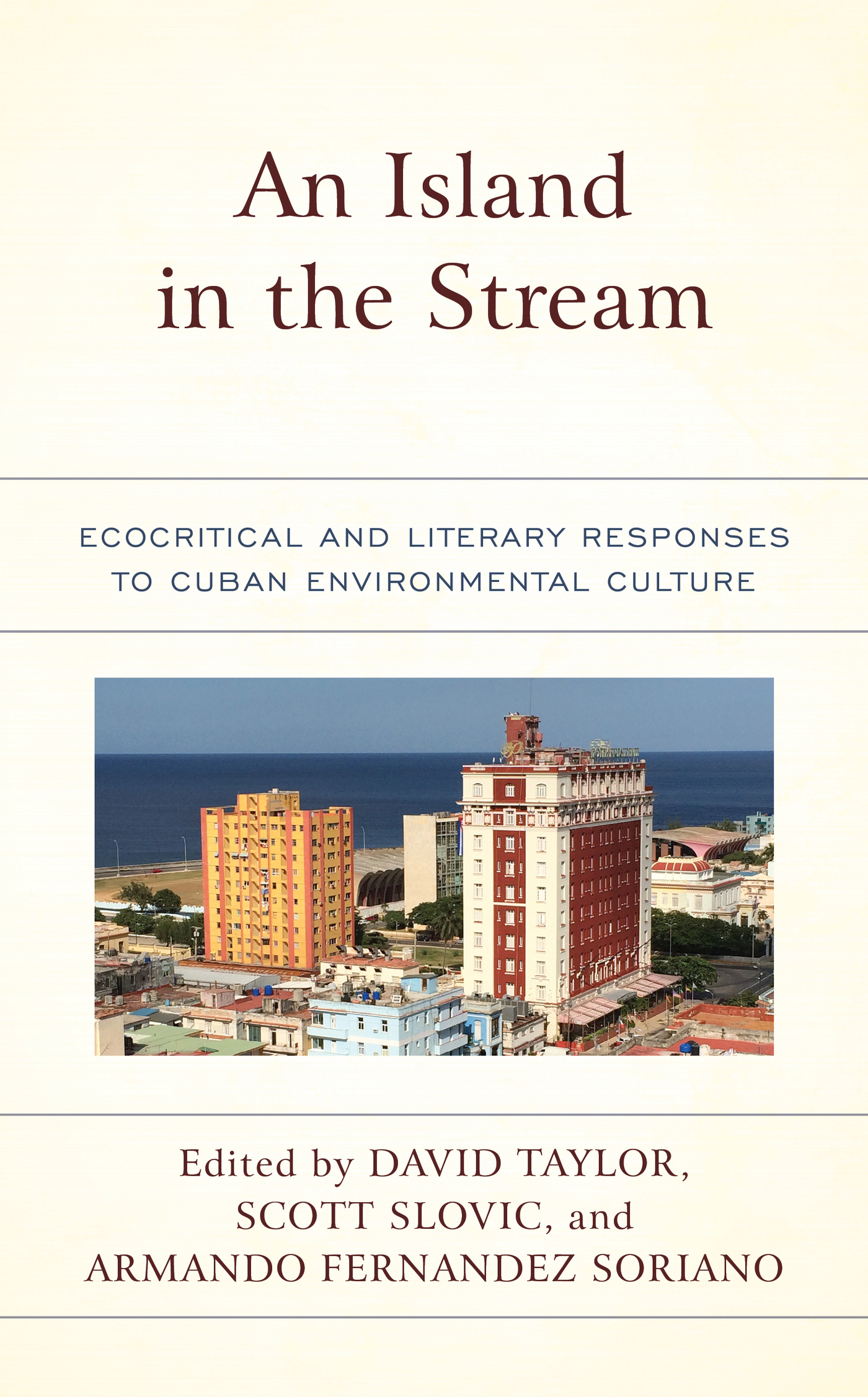An Island in the Stream
An Island in the Stream
Ecocritical and Literary Responses
to Cuban Environmental Culture
Edited by David Taylor, Scott Slovic,
and Armando Fernandez Soriano
LEXINGTON BOOKS
Lanham Boulder New York London
Published by Lexington Books
An imprint of The Rowman & Littlefield Publishing Group, Inc.
4501 Forbes Boulevard, Suite 200, Lanham, Maryland 20706
www.rowman.com
6 Tinworth Street, London SE11 5AL
Copyright 2019 by The Rowman & Littlefield Publishing Group, Inc.
All rights reserved. No part of this book may be reproduced in any form or by any electronic or mechanical means, including information storage and retrieval systems, without written permission from the publisher, except by a reviewer who may quote passages in a review.
British Library Cataloguing in Publication Information Available
Library of Congress Cataloging-in-Publication Data
ISBN: 978-1-4985-9916-0 (cloth : alk. paper)
ISBN: 978-1-4985-9917-7 (electronic)
 TM The paper used in this publication meets the minimum requirements of American National Standard for Information Sciences Permanence of Paper for Printed Library Materials, ANSI/NISO Z39.48-1992.
TM The paper used in this publication meets the minimum requirements of American National Standard for Information Sciences Permanence of Paper for Printed Library Materials, ANSI/NISO Z39.48-1992.
Acknowledgments
Cuba:
La Fundacin Antonio Nez Jimnez de la Naturaleza y el Hombre
La Unin de Escritores y Artistas de Cuba (UNEAC)
Universidad de la Habana
United States:
School of Marine and Atmospheric Sciences and Sustainability Studies Program, Stony Brook University
English Department, University of Idaho
University of Utah
Creative Writing Department, University of Arizona
Credits
Chapter 1: Dimension Ambiental en Dos Textos de Excilia Saldaa. La Gaceta de Cuba vol. 1 (2017).
Chapter 3: Hombres y mujeres de la tierra en los textos de viaje martianos. ILE, Anuario de Ecologia, Cultura y Sociedad. No. 3.3 (2003).
Chapter 5: Margarita Mateo Palmer, Lydia Cabrera and The Narrative of Nature, REVOLUCIN Y CULTURA.
Chapter 6: The New World Baroque as Postcolonial Ecology in Alejo Carpentiers The Lost Steps. This essay was originally published in Postcolonial Ecologies (Oxford UP 2011), George B. Handley.
Chapter 7: Cuban Theatre and the Dilemma of Nature. ISLE: Interdisciplinary Studies in Literature and Environment 22.4 (Autumn 2015).
Chapter 11: Siguiendo a Kengue. La Gaceta de Cuba vol. 1 (2017).
Chapter 12: Robert Michael Pyle, The Cuba Poems, Rain Magazine 2017.
Chapter 13: Restauracin. La Gaceta de Cuba vol. 1 (2017).
Chapter 14: Poesia puertorriquea y sueos de indepencia. La Gaceta de Cuba vol. 1 (2017).
Chapter 15: El trompo: en la Sierra Maestra con la Guerilla de Teatreros. La Gaceta de Cuba vol. 1 (2017).
Introduction
Scott Slovic and David Taylor
Ernest Hemingways posthumous novel Islands in the Stream (1970) details the life of a character named Thomas Hudson, who moved from the U.S. mainland to the Bimini Islands fifty miles east of Miami in pursuit of maritime adventure, a laid-back life among the local people of African descent, and the daily pleasure of island breezes. Some three hundred miles southwest of Bimini, two hundred miles from Miami, is Havana, Cuba, where Hemingway actually lived intermittently between 1939 and 1960, creating a homestead called Finca Vigia (lookout farm) on the edge of town. The island in the Gulf Stream that Hemingway actually knew best, and where he helped create a Caribbean mythology that has tantilized the imagination of North Americans for more than half a century, is Cuba. Despite the ominous undertones of WWII U-boats (and sharks) passing through the Caribbean waters in Islands in the Stream, the book also portrays an island pastoralism where the protagonist awakens to a light breeze blowing and out across the flats the sand was bone white under the blue sky and the small high clouds that were traveling with the wind made dark moving patches on the green water (5354). Todays visitor to Havana, or city resident, is more likely to experience the sea as a choppy body of dark water where few boats, aside from foreign cruise ships, are allowed. Most people in Cubas capital city experience the Havana Harbor by walking along the Malecn, a five-mile esplanade along the seawall, looking down upon the rocky shoreline. The gap between Hemingways Caribbean imaginary and the reality of contemporary urban experience in Cuba is palpable.
But just as Hemingways portrayal of the Caribbean in the 1940s is a far stretch from certain aspects of todays reality, so too does Havana represent only a small facet of Cuban environmental culture. American environmentalists have long looked at modern Cuba as a model of progressive environmental thinking. Since the 1980s, Cuba has successfully tackled such problems as deforestation and garbage dumps resulting from poverty through vigorous restoration efforts. Cuba is known as the location of the Caribbeans largest protected wetland, the Cienaga de Zapata Biosphere Reserve. Rachel Cernansky argued in her 2012 article Why Cubas Sustainability Is Not an Accident that some of Cubas sustainable practices have been framed as accidental choices because embargo restrictions have made it difficult to get things like pesticides and traditional building materials, but the government deserves credit for integrating sustainability, very intentionally, into policy initiatives. As Fidel Castro stated in his 1992 speech at the Earth Summit in Rio de Janeiro, Between 1992 and 1998, the National Assembly of Peoples Power amended the Cuban constitution to entrench the concept of sustainable development; the National Environment and Development Program was developed... ; an overarching environment law was passed; and a natoinal environment strategy was launched (Cernansky). Daniel Whittle and Orlando Rey Santos, in Protecting Cubas Environment (2006), highlight the specific role of Cubas Ministry of Science, Technology, and Environment (CITMA), which founded in 1994, in safeguarding the ecological crown jewel of the Caribbean, with more than 3,000 miles of coastline, spectacular coral reefs, massive mangrove wetlands, tropical wet forests, coastal mountains, caves, and rich biodiversity unmatched in the region (74).
At the same time North American scholars of environmental policy, such as Whittle and Santos, were beginning to detail the trend-setting actions of the Cuban regime, specialists in the environmental humanities were also turning their attention to the Caribbean region. Elizabeth M. DeLoughrey, Rene K. Gosson, and George B. Handley helped to launch the now-burgeoning subdiscipline of postcolonial ecocriticism with their 2005 collection Caribbean Literature and the Environment: Between Nature and Culture, which builds upon the premise of Martinican cultural theorist douard Glissants statement that the Caribbean landscape is its own monument: its meaning can only be traced on the underside. It is all history (Caribbean Literature, 1). The 2005 volume helped to revolutionize ecocritical practice by placing the efforts of the environmental justice movement into an international context, recognizing the inextricability of social justice (indeed, of all human action) and the physical world of nature. The specific impetus for Caribbean Lierature and the Environment
Next page
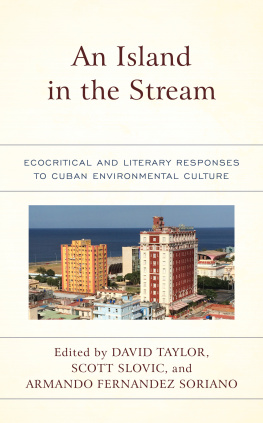



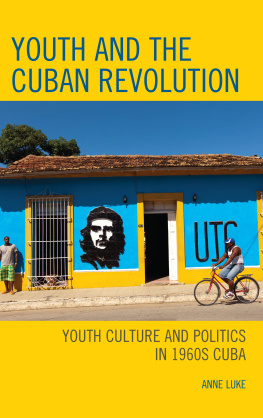

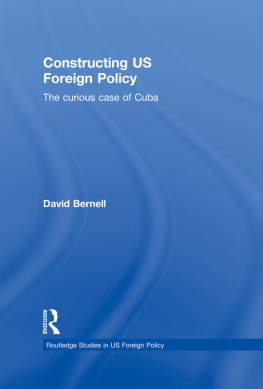
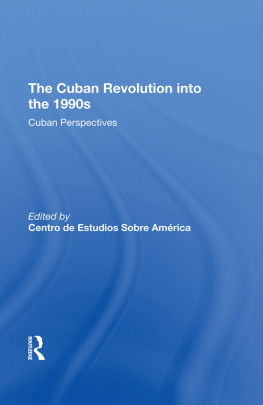
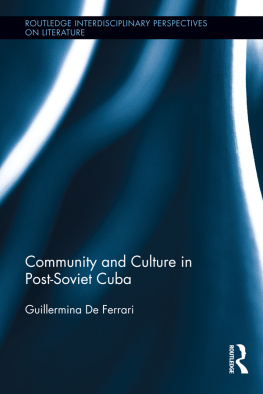
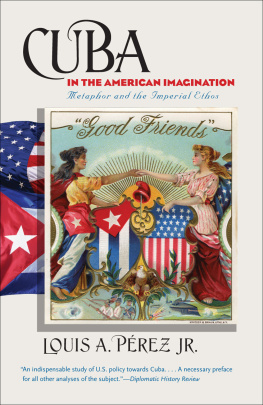

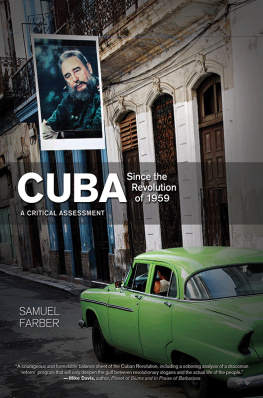
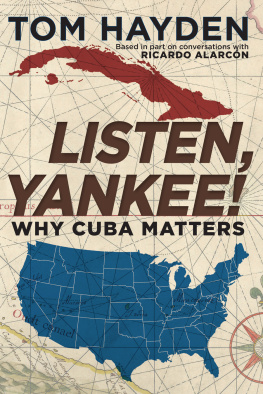
 TM The paper used in this publication meets the minimum requirements of American National Standard for Information Sciences Permanence of Paper for Printed Library Materials, ANSI/NISO Z39.48-1992.
TM The paper used in this publication meets the minimum requirements of American National Standard for Information Sciences Permanence of Paper for Printed Library Materials, ANSI/NISO Z39.48-1992.